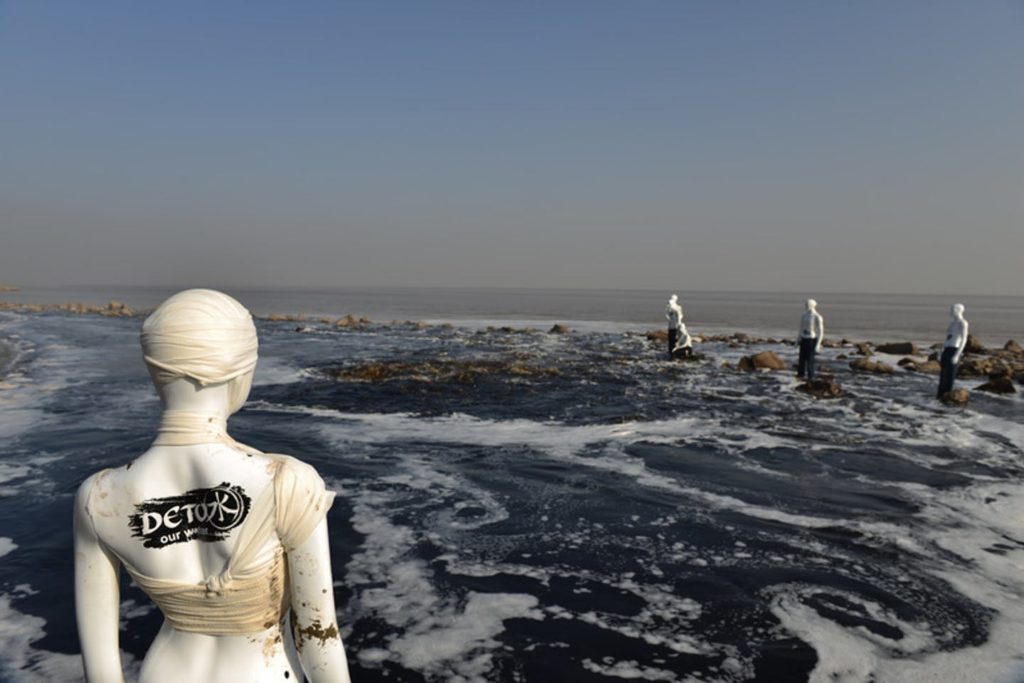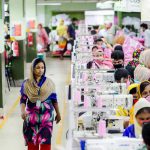 ‘Detox’ mannequins in Zhejiang Province, China. Greenpeace activists install a group of mannequins around a large waste water discharge pipe belonging to the Linjiang Waste Water Treatment Plant (WWTP), in Xiaoshan District, Hangzhou. Image: ©Wu Di/Greenpeace
‘Detox’ mannequins in Zhejiang Province, China. Greenpeace activists install a group of mannequins around a large waste water discharge pipe belonging to the Linjiang Waste Water Treatment Plant (WWTP), in Xiaoshan District, Hangzhou. Image: ©Wu Di/Greenpeace
The textile and apparel industry and especially textile wet-processing is one of the largest consumers of water in manufacturing and also one of the main producers of industrial wastewater. Since various chemicals are used in different textile processes like pre-treatment, dyeing, printing, and finishing, the textile wastewater contains many toxic chemicals which if not treated properly before discharging to the environment, can cause serious environmental damage. The textile and apparel industry comprises a large number of plants that, together, consume a significant amount of energy which result in substantial greenhouse gas (GHG) emissions too.
Greenpeace Warns of Environmental Toll of China’s Textile Industry:
In a Beijing gallery exhibiting bikini clad mannequins smothered in dirt, Greenpeace Toxic campaigner Zhao Yan delivered findings of an investigation into water pollution from two textile towns in China’s Guangdong province.
The environmental price of fast fashion
The fashion industry is facing increasing global scrutiny of its environmentally polluting supply chain operations. Despite the widely publicized environmental impacts, however, the industry continues to grow, in part due to the rise of fast fashion, which relies on cheap manufacturing, frequent consumption and short-lived garment use. In this Review, we identify the environmental impacts at critical points in the textile and fashion value chain, from production to consumption, focusing on water use, chemical pollution, CO2 emissions and textile waste. Impacts from the fashion industry include over 92 million tonnes of waste produced per year and 79 trillion litres of water consumed. On the basis of these environmental impacts, we outline the need for fundamental changes in the fashion business model, including a deceleration of manufacturing and the introduction of sustainable practices throughout the supply chain, as well a shift in consumer behaviour — namely, decreasing clothing purchases and increasing garment lifetimes. These changes stress the need for an urgent transition back to ‘slow’ fashion, minimizing and mitigating the detrimental environmental impacts, so as to improve the long-term sustainability of the fashion supply chain. (Source: Nature Reviews Earth & Environment)
Textile and Clothing Industry’s Energy and Water Consumption and Pollutions Profile
The following Infographic, prepared by Florida based Global Efficiency Intelligence LLC, shows the Textile and Clothing Industry’s Energy and Water Consumption and Pollutions Profile.
(Courtesy: Global Efficiency Intelligence LLC)






